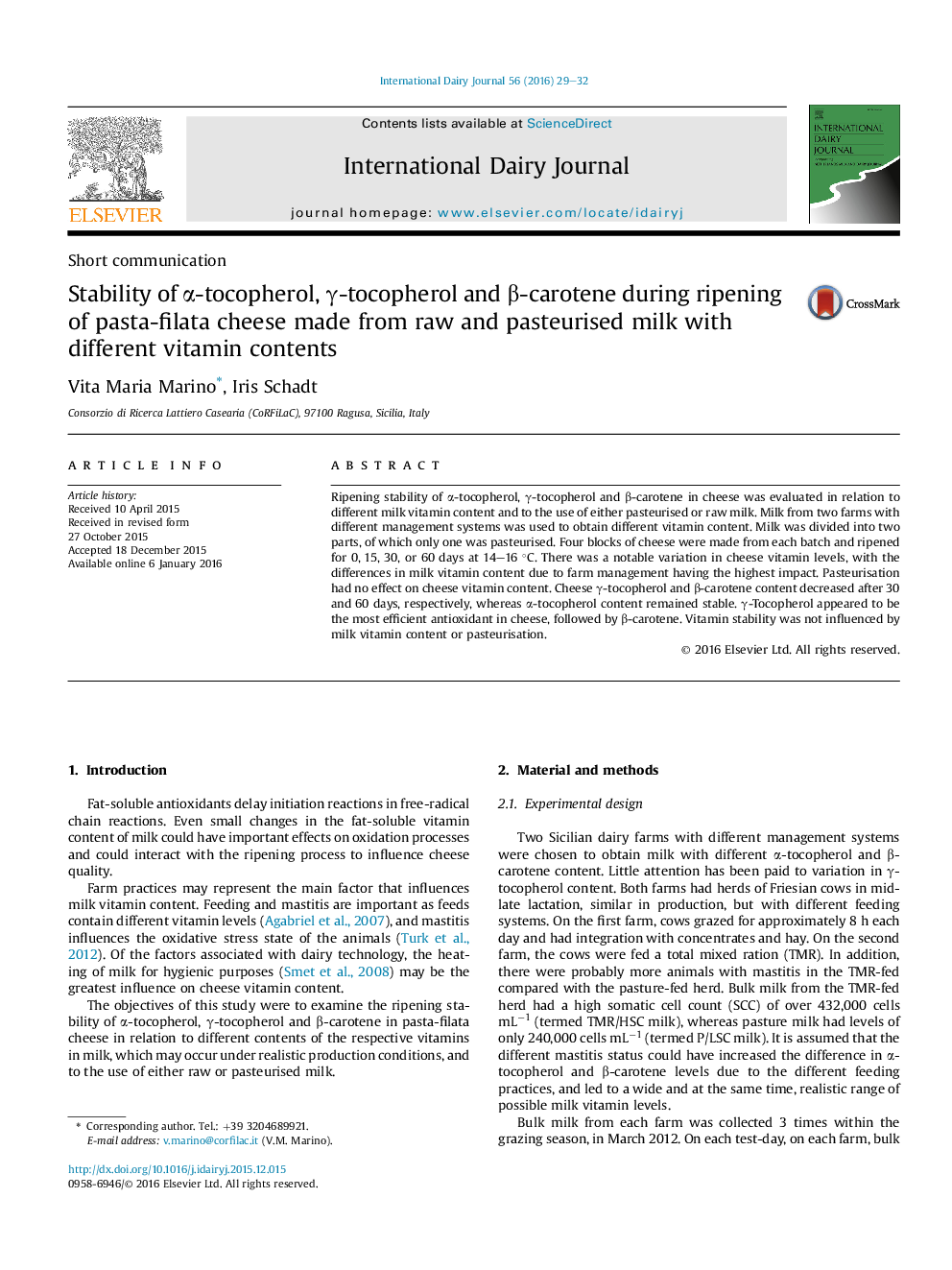| Article ID | Journal | Published Year | Pages | File Type |
|---|---|---|---|---|
| 2433998 | International Dairy Journal | 2016 | 4 Pages |
Ripening stability of α-tocopherol, γ-tocopherol and β-carotene in cheese was evaluated in relation to different milk vitamin content and to the use of either pasteurised or raw milk. Milk from two farms with different management systems was used to obtain different vitamin content. Milk was divided into two parts, of which only one was pasteurised. Four blocks of cheese were made from each batch and ripened for 0, 15, 30, or 60 days at 14–16 °C. There was a notable variation in cheese vitamin levels, with the differences in milk vitamin content due to farm management having the highest impact. Pasteurisation had no effect on cheese vitamin content. Cheese γ-tocopherol and β-carotene content decreased after 30 and 60 days, respectively, whereas α-tocopherol content remained stable. γ-Tocopherol appeared to be the most efficient antioxidant in cheese, followed by β-carotene. Vitamin stability was not influenced by milk vitamin content or pasteurisation.
